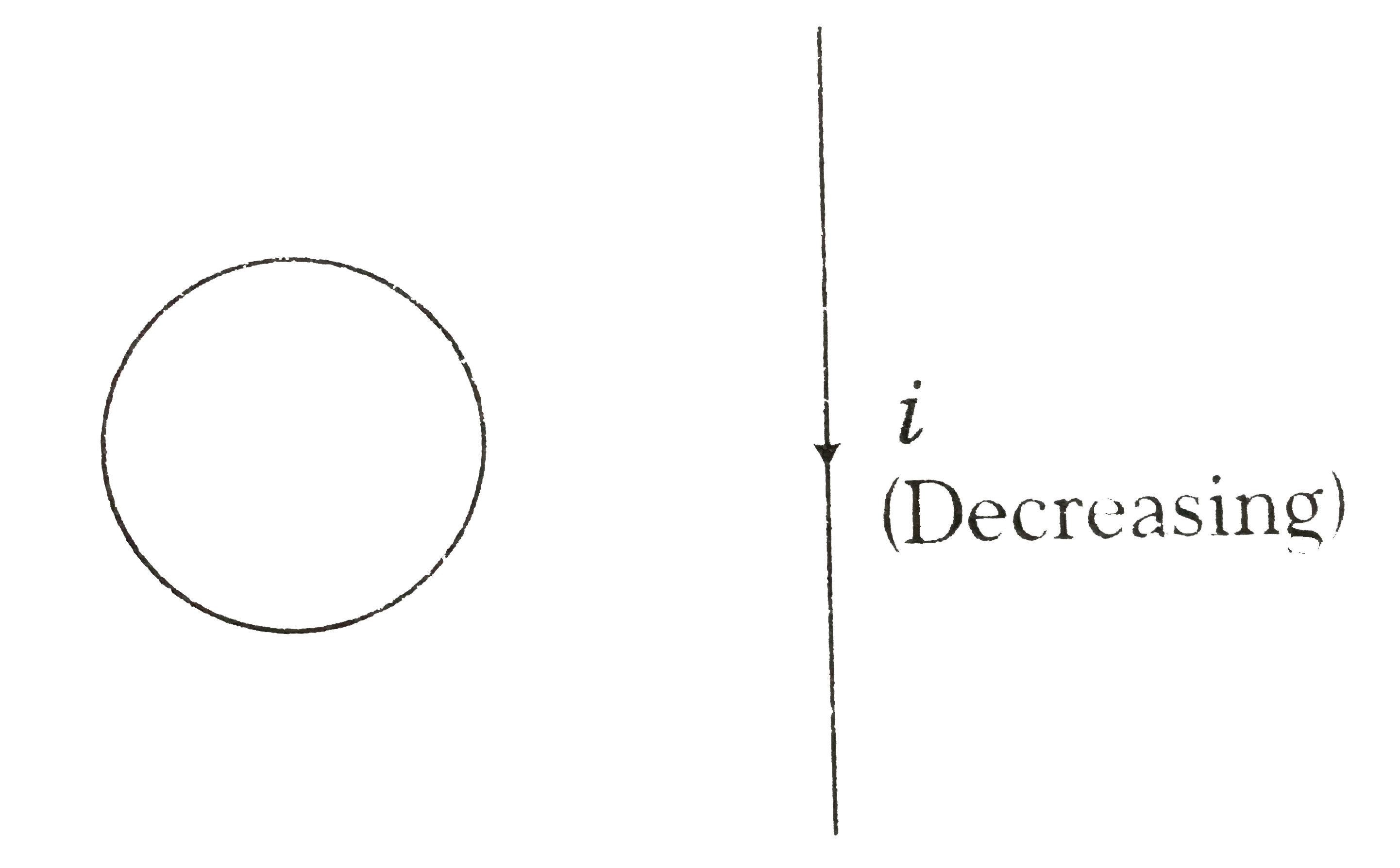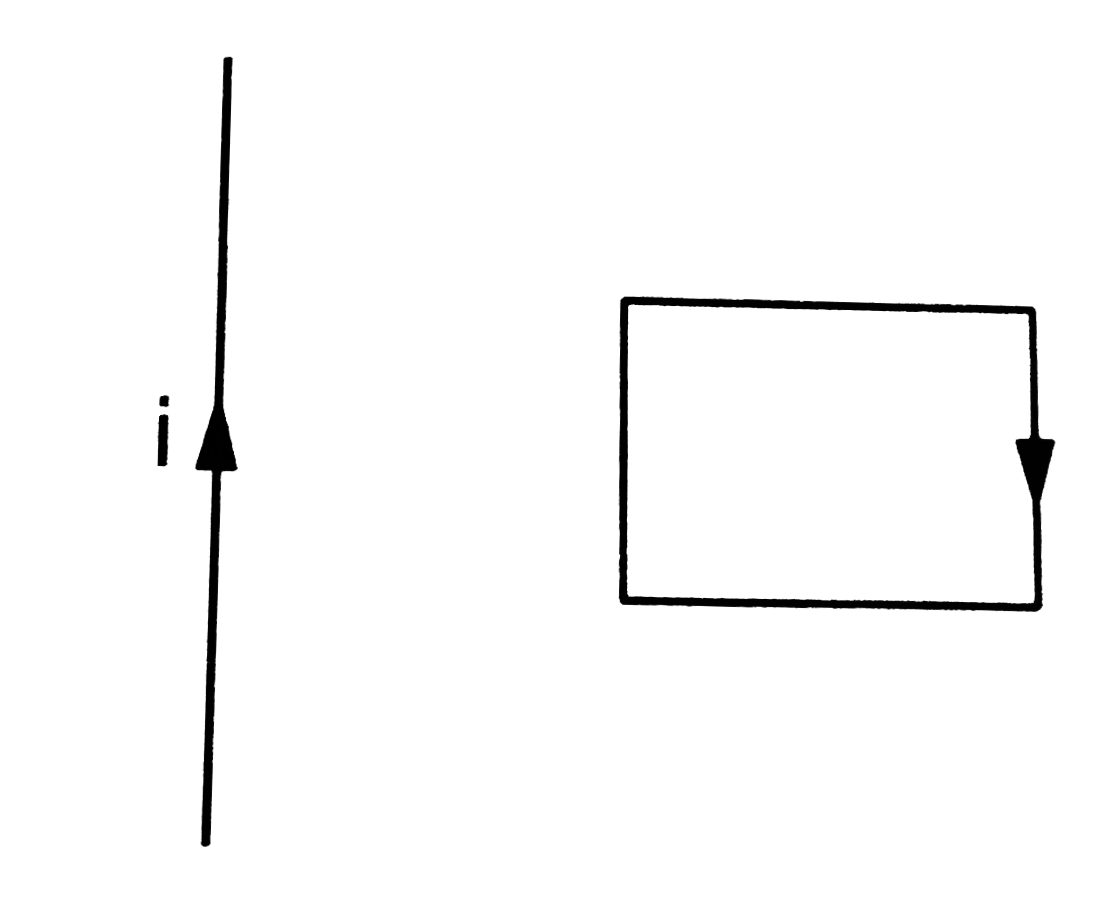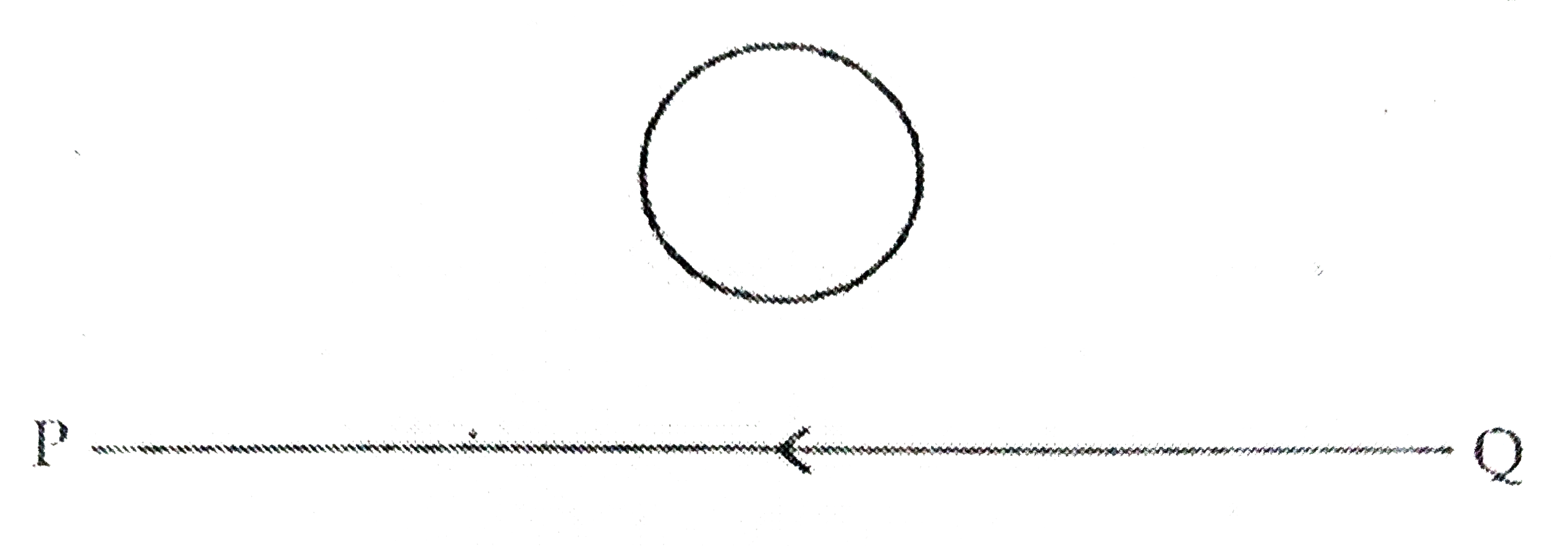Two circular loops lie side by side in the same plane. One is connected to a source that supplies an increasing current, the other is a simple closed ring. Is the induced current in the ring is in the same direction as that in the loop connected to the source or opposite? What if the current in the first loop is decreasing?
To solve the problem, we need to analyze the situation using Faraday's law of electromagnetic induction and Lenz's law. Let's break it down step by step.
Step 1: Understanding the Setup
We have two circular loops:
- Loop A: Connected to a source supplying an increasing current.
- Loop B: A simple closed ring placed adjacent to Loop A.
Step 2: Determine the Magnetic Field Direction
When current flows through Loop A, it generates a magnetic field. The direction of the magnetic field can be determined using the right-hand rule:
- If the current is flowing in a clockwise direction, the magnetic field lines will point into the plane of the loop.
- If the current is flowing in a counterclockwise direction, the magnetic field lines will point out of the plane of the loop.
Step 3: Analyzing the Increasing Current
Assume the current in Loop A is increasing:
- As the current increases, the magnetic field produced by Loop A also increases.
- This results in an increasing outward magnetic flux through Loop B.
Step 4: Applying Lenz's Law
According to Lenz's law, the induced current in Loop B will flow in such a direction as to oppose the change in magnetic flux through it:
- Since the magnetic flux through Loop B is increasing outward (due to Loop A), the induced current in Loop B will flow in a direction that creates an inward magnetic flux to oppose this increase.
Step 5: Conclusion for Increasing Current
Thus, when the current in Loop A is increasing, the induced current in Loop B will flow in the same direction as the current in Loop A.
Step 6: Analyzing the Decreasing Current
Now, consider the case when the current in Loop A is decreasing:
- As the current decreases, the magnetic field produced by Loop A also decreases, leading to a decrease in the outward magnetic flux through Loop B.
Step 7: Applying Lenz's Law Again
Again, applying Lenz's law:
- Since the magnetic flux through Loop B is decreasing outward, the induced current in Loop B will flow in a direction that creates an outward magnetic flux to oppose this decrease.
Step 8: Conclusion for Decreasing Current
Therefore, when the current in Loop A is decreasing, the induced current in Loop B will flow in the opposite direction to the current in Loop A.
Final Summary
- If the current in Loop A is increasing, the induced current in Loop B is in the same direction.
- If the current in Loop A is decreasing, the induced current in Loop B is in the opposite direction.
---
We have two circular loops:
- Loop A: Connected to a source supplying an increasing current.
- Loop B: A simple closed ring placed adjacent to Loop A.
When current flows through Loop A, it generates a magnetic field. The direction of the magnetic field can be determined using the right-hand rule:
- If the current is flowing in a clockwise direction, the magnetic field lines will point into the plane of the loop.
- If the current is flowing in a counterclockwise direction, the magnetic field lines will point out of the plane of the loop.
Assume the current in Loop A is increasing:
- As the current increases, the magnetic field produced by Loop A also increases.
- This results in an increasing outward magnetic flux through Loop B.
According to Lenz's law, the induced current in Loop B will flow in such a direction as to oppose the change in magnetic flux through it:
- Since the magnetic flux through Loop B is increasing outward (due to Loop A), the induced current in Loop B will flow in a direction that creates an inward magnetic flux to oppose this increase.
Thus, when the current in Loop A is increasing, the induced current in Loop B will flow in the same direction as the current in Loop A.
Now, consider the case when the current in Loop A is decreasing:
- As the current decreases, the magnetic field produced by Loop A also decreases, leading to a decrease in the outward magnetic flux through Loop B.
Again, applying Lenz's law:
- Since the magnetic flux through Loop B is decreasing outward, the induced current in Loop B will flow in a direction that creates an outward magnetic flux to oppose this decrease.
Therefore, when the current in Loop A is decreasing, the induced current in Loop B will flow in the opposite direction to the current in Loop A.
- If the current in Loop A is increasing, the induced current in Loop B is in the same direction.
- If the current in Loop A is decreasing, the induced current in Loop B is in the opposite direction.
Topper's Solved these Questions
- ELECTROMAGNETIC INDUCTIONBOOK - DC PANDEY ENGLISHCHAPTER - ELECTROMAGNETIC INDUCTIONEXERCISE - Exercise 27.2
4 Videos
- ELECTROMAGNETIC INDUCTIONBOOK - DC PANDEY ENGLISHCHAPTER - ELECTROMAGNETIC INDUCTIONEXERCISE - Exercise 27.3
4 Videos
- ELECTROMAGNETIC INDUCTIONBOOK - DC PANDEY ENGLISHCHAPTER - ELECTROMAGNETIC INDUCTIONEXERCISE - Miscellaneous Examples
5 Videos
- CURRENT ELECTRICITYBOOK - DC PANDEY ENGLISHCHAPTER - CURRENT ELECTRICITYEXERCISE - Medical entrances gallery
97 Videos
- ELECTROMAGNETIC WAVESBOOK - DC PANDEY ENGLISHCHAPTER - ELECTROMAGNETIC WAVESEXERCISE - Sec C
22 Videos
Similar Questions
Two different wire loops are concentric and lie in the same plane. The current in the outer loop is clockwise and increasing with time. The induced current in the inner loop then is
View SolutionA circular loop is placed near a current carrying conductor as shown in figure. Find the direction of induced current, if the current, in the wire is decreasing.

View SolutionTwo identical coaxial circular loops carry a current i each circulating int the same direction. If the loops approch each other the current in
View SolutionShow a conduction loop placed near a long, straight wire carrying current i as shown. If the current increases continuously, find the direction of the induced current in the loop.

View SolutionA conductor loop is held above a current carrying wire 'PQ' as shown in figure. Depict the direction of the current induced in the loop when the current in the wire PQ is constanly increasing.

View SolutionAn electron moves along the line XOX' which lies in the same plane as the square loop of conducting wire as shown. The direction of induced current, if any in the loop is
View SolutionA triangular loop of side l carries a current I. It is placed in a magnetic field B such that the plane of the loop is in the direction of B. The torque on the loop is
View SolutionA triangular loop of side l carries a current l. It is placed in a magnetic field B such that the plane of the loop is in the direction of B. The torque on the loop is
View SolutionA small, conducting circular loop is placed inside a long solenoid carrying a current. The plane of the loop contains the axis of the solenoid. If the current in the solenoid is varied, the current induced in the loop is
View SolutionA small, conducting circular loop is placed inside a long solenoid carrying a current. The plane of the loop contains the axis of the solenoid. If the current in the solenoid is varied, the current induced in the loop is
View Solution
